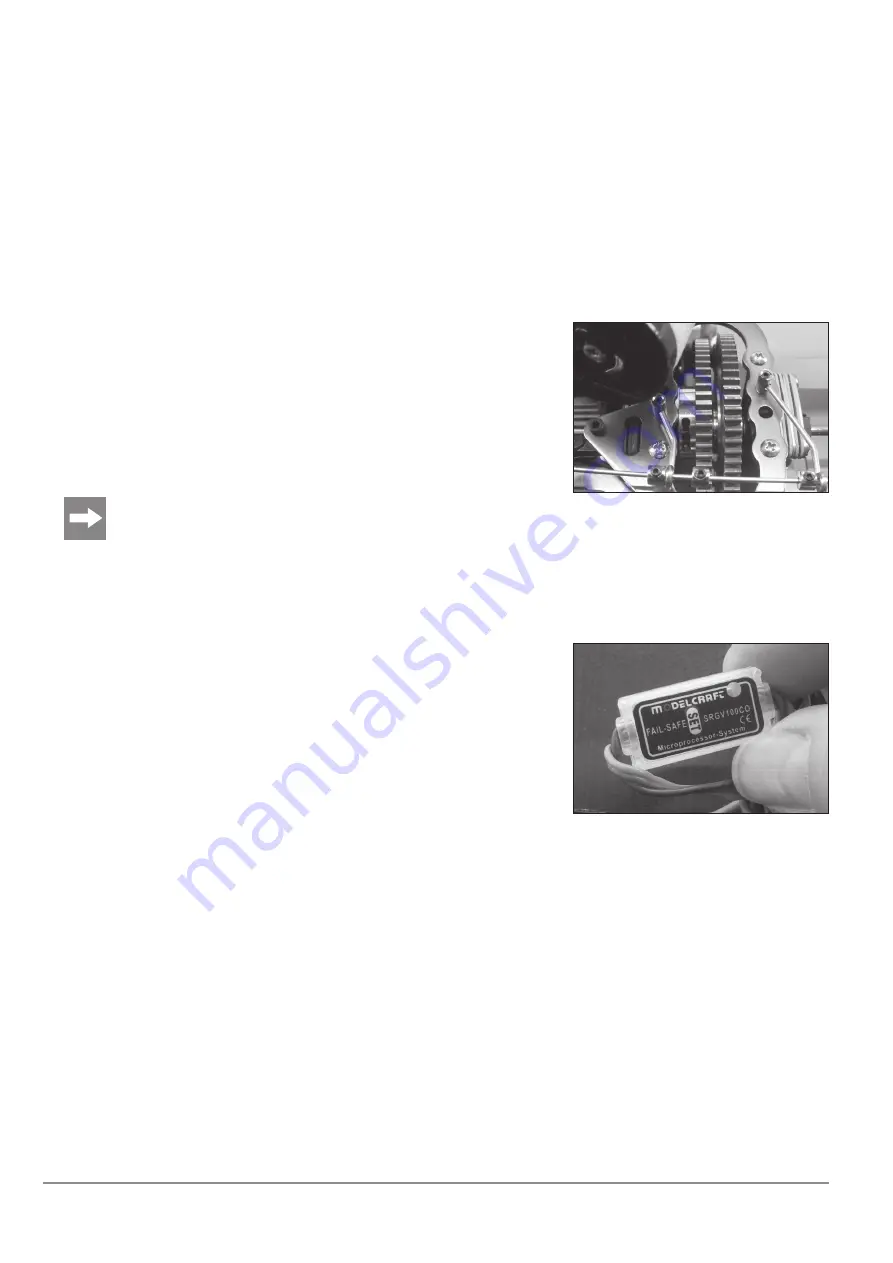
54
4WD MonsterTruck Destroyer XXL 1:8 No. 3 58 10
e) Setting the Shift Point on a Two-Speed Transmission
Function of the Two-Speed Transmission
Two pinions with a different number of teeth are tightly screwed onto the clutch bell. The two main pinions on the
centrifugal clutch
are connected with each
other via a
one-way bearing
.
The shift point depends on the revolutions.
In the first rate of speed the engine speed is transmitted from the smaller pinion on the clutch bell to the larger gear on the drive section, while the gear for
the second rate of speed runs idle.
At high speeds the centrifugal force causes the lever of the centrifugal clutch to be pulled outward against a spring resistance and engage the attachment
on the gear for the second rate of speed. The engine speed is now transmitted via the larger pinion of the clutch bell to the smaller gear in the drive section,
while the gear for the first rate of speed is running via the one-way bearing.
The spring resistance of the centrifugal clutch, and with it the switch point, can be adjusted with a headless screw (2 mm Allen screw).
Put down the model so that the wheels can turn freely.
Turn the main pinions on the two-speed transmission until the clearance in the cover of the two-speed transmission is visible.
You can access the headless screw from the right.
Inserting the screw
Spring preload is increased.
Higher revolutions are necessary for the attachment to engage.
The transmission switches later.
Taking out the screw
Spring preload is decreased.
Lower revolutions are necessary for the attachment to engage.
The transmission switches earlier.
If you are a beginner and are facing problems with the driving speed, we recommend that you postpone the switch point until the model
does not switch into second gear at all.
f) Programming the fail-safe
You can save a certain position of a connected servo in the fail-safe, which is then accessed
in case of a failure of the transmitter signal or in case of undervoltage of the receiver‘s power
supply.
The fail-safe is inserted between the servo connection of a receiver and a servo. Please make sure
the device is connected correctly.
Turn on the power supply of the transmitter and the one of the receiver.
Now the LED on the fail-safe flashes at regular intervals to indicate the correct function.
Move the servo to the position the fail-safe is supposed to access with the transmitter in case the
transmitter signal fails (this may be the engine idle position of a throttle servo or a certain position
of the elevator unit servo).
Briefly press the button on the fail-safe.
The current position of the connected servo is saved.
Now the fail-safe has two different functions:
Failure of the transmitter‘s signal
In case of a failure of the transmitter‘s signal, the fail-safe moves the connected servo to the position you have programmed.
The LED on the fail-safe is permanently lit.
Once a transmitter signal is detected again, the servo can be moved/controlled again as usual.
Undervoltage
In case of undervoltage of the receiver‘s power supply (e.g. voltage less than 4V), the fail-safe also moves to the programmed position if there is still
sufficient power (or if the receiver‘s power supply does not fail suddenly).
In this case, the LED flashes differently (instead of short red flash impulses with long breaks = long red flash impulses with short breaks). The device no
longer leaves the fail-safe position even if the receiver‘s battery „recovers“ somewhat.
•
•
•
•
•
•
•
•
•
•
•
•
•
•
•
Summary of Contents for 23 58 10
Page 122: ...121 REELY 12 08 121 121 ...
Page 123: ...122 4WD MonsterTruck Destroyer XXL 1 8 No 23 58 10 ...
Page 124: ...123 REELY 12 08 123 123 ...















































